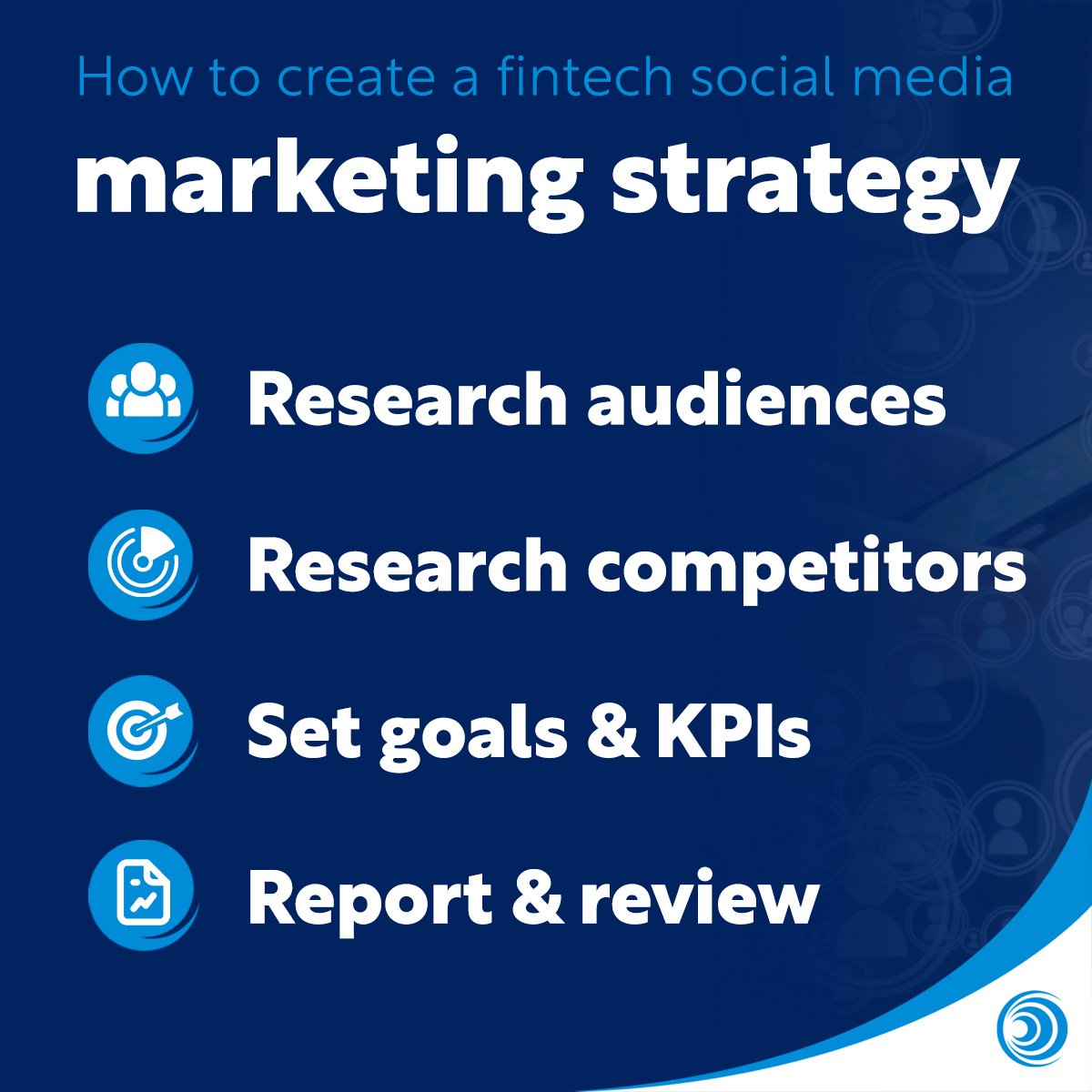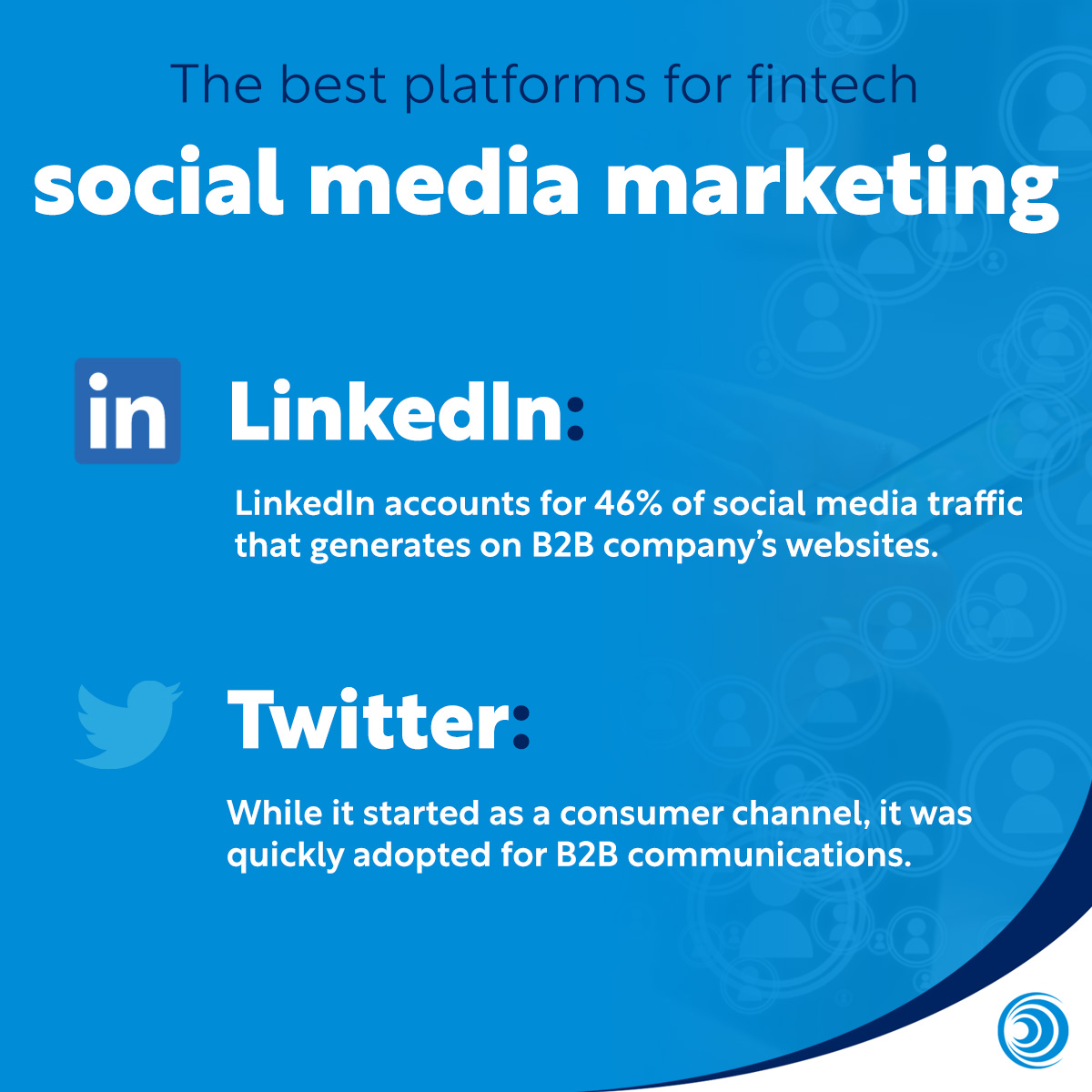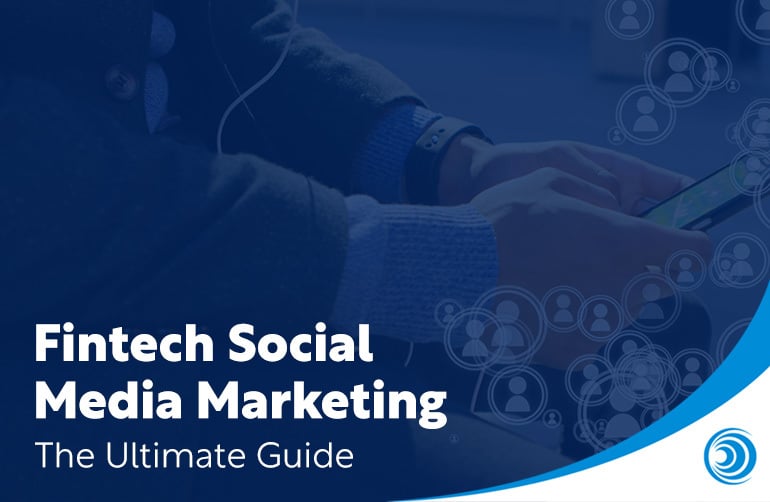- PAY360 – What’s Next For Fintech & Payments? - August 26, 2025
- Video Marketing – Our Lessons Learned in Lockdown - August 26, 2025
- 5 Green Marketing Strategies - August 26, 2025
Social media marketing and fintech are still in their infancy.
However, like all infants, they are growing fast…
Many marketers are preoccupied with numbers of likes and shares. But they often overlook how the valuable data insights available that can help maximise the impact of your entire marketing strategy.
Let’s join up the dots between your social media and overall marketing strategy.
What is social media marketing?
Let’s start with the basics.
“Social media marketing is the process of creating content for social media platforms to promote your products and/or services, build community with your target audience, and drive traffic to your business.” (HubSpot)
Social media marketing has a short but rich history and is constantly evolving.
But ultimately, it has always been about the same things: connecting with your target audience, helping them understand your brand, and building a relationship with it.
It often plays an early and important role in attracting customers to the top of your sales funnel.
What is unique about social media marketing for fintech?
Your social media marketing strategy needs to be unique to the fintech industry.
In comparison to traditional banks, social media marketing by fintechs is often more light-hearted.
This has been a long-standing feature of fintech marketing more generally. It is a deliberate strategy to make fintech distinct from legacy financial service providers.
It is done primarily to engage customers and clients. It also makes fintech service providers seem more approachable, flexible, and appealing.
Curve is a great example of this.
Their tweets are fun, playful, and engaging. The language they use is informal with phrasing that is common to a younger demographic. Their social media strategy often prioritises customer engagement over pushing their products or content.

Curve’s Creative Director, Katie Rosseau, says:
“Our goal is to make branded social media suck less. We have no fear straddling the line between safe and controversial. We challenge the complacency or archaic thinking of big traditional industry players. Curve is here to disrupt the world of finance, so why wouldn’t our tweets do the same?”
It is interesting to see how fintech social media outreach is evolving.
Some consumer-facing fintechs, such as Curve, have maintained the disruptive and anti-establishment approach.
Others are ironically becoming more like established players. This is because they are now looking to target bigger corporates or even legacy banks as clients. Using a more sober tone of voice is an attempt at presenting a more serious and trustworthy persona to their target market.
Consumer-facing fintechs often optimise their social media accounts for customer service outreach by engaging with customers and responding to customers.
Many consumers will now judge service providers based on their ratings on platforms such as Trustpilot. The need for a positive and responsive public brand persona has never been more important.
The benefits of social media marketing for fintech

There are many benefits of social media marketing when done well, whether that be brand awareness or lead generation.
Let’s dive into them in a bit more detail…
Increased brand awareness
It’s no surprise that over 91% of marketers claim that their social media marketing efforts greatly increased their brand’s exposure.
Social media is essential to building awareness and trust of with customers.
Post engagement will help boost your brand visibility even further. Encourage employees, clients, and partners to interact with your posts.
Likes are good but leaving positive or thoughtful comments that encourage conversation are even better.
For social media posts that are especially important to your business, consider giving influential friends a heads up and ask if they would comment. This will get your post shared with a larger audience.
Simply by having people engage with your content, your brand awareness will gradually increase and help build a positive association with your brand amongst your target market.
Helps develop brand identity
Social media gives you the opportunity to build your brand identity.
As part of your brand strategy, you will develop a tone of voice, as well as recognisable visual style, such as logos, fonts, and a colour palette.
You should always stick to your brand guidelines and use your company’s tone of voice when sharing content on social media. Each post should have a consistent look, feel, and attitude to support the creation of a distinctive brand.
This is important as 71% of customers believe it is very or somewhat important that they recognise a brand before they make a purchase.
Brand identity isn’t only an important factor for your customers. 82% of investors believe that name recognition is important in guiding them in their investment decisions.
Generates leads
Social media marketing can be an effective way to generate low-cost leads, compared to other marketing methods.
Businesses can utilise their social media accounts to increase their lead generation efforts and revenue.
There are some basic things you should do for the best chance of generating leads. These include:
- Optimising your social media profile
- Using weblinks in your content
- Running a paid social media advertising campaign
- Share customer reviews and testimonials
Research states that 66% of marketers that spend 6 hours on social media per week have gotten more leads. This underlines its value as a lead generation channel when done well.
Brings higher conversion rates
Studies have shown that social media can deliver up to 100% higher lead-to-close rate than outbound marketing.
Part of its success is that you can humanise your brand through social media marketing. This creates a better rapport with customers and prospects that can accelerate conversion rates.
The acid test of social media is not really about what you post. The reaction of your customers is what really matters.
If you are delivering a high-quality product and good customer service, you should be able to assume your social media profile will be positive. This should certainly support your customer conversion rates and brand loyalty.
Increases customer satisfaction
Every interaction on social media is an opportunity to publicly demonstrate the value your brand places on its customer relationships.
Whether a customer has a complaint or a query, make sure to address the comment through personal dialogue.
A company that is dedicated to customer satisfaction and takes the time to compose a well-thought-out, personal response, will be viewed by the public in a positive light.
As David Gigniss, marketing expert and author, once said,
“When you interact with customers on a one-to-one basis on social media, it makes them more loyal. Loyal customers spend more with you, stay with you longer and tell their friends about you.”
Overall, creating a good relationship with your customers via social media will help increase customer satisfaction.
Conversely, do not try to cover up a poor product or customer service with social media posts. This is likely to provoke customer backlash.
Like Monzo has done many times, own up when things aren’t working properly as customers are likely to react well to honesty and transparency.
How to create a fintech social media marketing strategy

Not sure where to start?
There are four key factors to consider when developing your social media marketing strategy:
Research audience & personas
Here’s a statistic that came as a shock to us.
Did you know that only 55% of marketers use social data to understand their target audience?
Data provides a huge opportunity for marketers to gain intel about their target market.
There are several tools, such as HubSpot, that can give you a greater understanding of the personas you’re trying to reach. It can provide you with information like age, job role, location, and many more demographics from information gathered through lead generation and website statistics.
Once you know your audience, you’ll be better equipped to target them. You can do this by sharing content that resonates with them at precisely the right time.
Research competitors
Competitor analysis is crucial to your social media marketing strategy.
Evaluating your competitors will allow you to be one step ahead of them.
Social media competitor analysis will give you a better understanding of the strengths and weaknesses of your competitors. By knowing what your competitors are up to and what social platforms drive most of their traffic, you can be one step ahead.
96% of businesses say their competitor’s social media accounts are valuable sources of intel, proving how essential it is to conduct a competitor analysis.
By conducting this research, you can adjust your social media strategy by learning from what they do well and improving on what they don’t.
Set goals & KPIs
Your core business goals should influence your social media strategy, as well as the amount of time and resource you’ll need to dedicate to each campaign.
According to the 2021 Sprout Social Index, the most common goals for social media marketing are increasing brand awareness (58%) and increasing community engagement (41%).
Whether your marketing goals are similar or not, it is important to outline them before embarking on your social media journey.
To understand if you’ve met those goals, you should select some KPIs (key performance indicators).
Your goals and KPIs should be SMART (specific, measurable, achievable, relevant, and timely), a numerical value can help identify if activity has gone up or down. KPIs you should track include engagement and impressions.
Report & review
Once you have selected your KPIs, you should review and report your social media analytics. We recommended doing this on a bi-weekly or monthly basis.
Regularly monitoring your social media metrics will enable you to tweak and improve your social media campaigns.
Reporting the data on engagement and click-through rates with other members of your team is likely to result in useful discussion that builds on your own insights.
Based on the data in your social media reports, you can assess whether your KPIs are meeting your overarching company goals or whether you need to adjust them.
How to get the most out of your fintech social media marketing strategy
Gaining thousands of impressions and engagements on your social media channels might seem like a goal in itself.
But if you’re not exercising that social media data to further develop your social media strategy, then you’re missing an important opportunity.
The data you gather from conducting your organic social media strategy can help inform next steps in your fintech’s overall marketing strategy, including your paid advertising campaigns.
Through social listening, you can see what posts and content your followers and target audience are responding to well organically.
This can then guide you with how to construct your paid social media campaigns.
You may even want to try retargeting those who engage frequently with your organic posts with a paid ad.
Retargeting can be a powerful way to move prospects through the sales funnel, but it is only possible once you have achieved initial engagement with a meaningful number of prospects.
Similarly, using the same data points you can flesh out an account-based marketing strategy. Account-based marketing outreach will allow you to directly contact those who are engaging with your ads and content.
Starting conversations will help you move the potential leads down the sales funnel.
The bottom line is this – your job is not done when someone likes your social media posts. It is simply the starting point for improving your overall marketing, so don’t waste your data!
Best platforms for fintech social media marketing

Depending on your brand’s proposition, tone of voice, and values, some social media platforms may be better suited than others.
It is important to choose the right social media platforms for your business in order to optimise your social media marketing strategy.
When choosing what social media networks to join, it is important to take the following into consideration:
- Follow your audience – Wherever your audience is, is where you want to be. For example, if you’re targeting C-level business executives, LinkedIn would be the right platform for you
- Quality over quantity – Pick two to three social media platforms and do them well. Don’t spread yourself thinly across multiple social networks and end up not giving them a proper level of attention
- The competition – Conduct some competitor analysis to see which social networks your competitors are using. Analytics will reveal which ones are achieving engagement or driving traffic to their website. Base your strategy on those findings
Now, let’s look at the two best suited platforms for fintech social media marketing:
LinkedIn is the top platform for B2B marketing, so it’s crucial to use it effectively.
Forbes ranks it the best platform for generating leads. As well as this, LinkedIn accounts for 46% of social media traffic that generates on B2B company’s websites.
It is great for updating your customers on business, recruiting staff, and connecting with industry partners.
A LinkedIn marketing strategy allows you to engage with your target audience and decision-makers in the fintech industry.
To make the most of your efforts, ensure you have:
- A complete LinkedIn page
- Clear goals
- Defined audiences
- Valuable content to share
Joining groups and creating showcase pages can also be beneficial.
Twitter has an average of 229 million daily active users.
While it started as a consumer channel, it was quickly adopted for B2B communications. It is a great example of how the lines between B2B and B2C marketing has become blurred over recent years.
It is a fast-paced platform that is great if you are planning on posting relevant content on a regular basis. It is a real top of the sales funnel engagement opportunity, so make sure your messaging is simple and impactful with a clear call to action.
Developing a habit of sharing informative and useful content will establish you as an authoritative thought leader in your industry.
For B2B marketing, Twitter is less formal in tone than LinkedIn. This presents an opportunity to test more edgy content and messaging.
How Blue Train can help with you fintech social media marketing
We are a fintech-specific marketing agency with in-depth understanding of fintech social media marketing.
Our services include comprehensive social media management for fintech businesses. We create engaging, shareable content tailored to your target market’s interests and needs, across platforms such as LinkedIn, Twitter, Facebook, and Instagram.
This includes strategy development, daily management, analytical testing, and creative campaigns. Our goal is to support your business objectives by driving your brand awareness, customer engagement, and prospect conversion.
Conclusion
Having a social media marketing strategy is crucial to the growth and development of every fintech looking to build relationships with B2B and B2C buyers.
Identifying your business’s key goals is essential in crafting a social media strategy before you venture onto social media.
It is essential that you agree these goals and associated metrics with your management team. If you think visibility and impressions are the priority while your sales team is expecting conversions, your social media strategy will fail.
Be sure that you are on the right social media platforms for your goals and your industry.
For successful B2B marketing in the fintech industry, LinkedIn is essential.
Maintaining a complete LinkedIn page, setting clear goals, defining your audiences, and sharing valuable content will help you maximise the efficiency of the platform.
So too will participating in groups and creating showcase pages are also effective.
It is far better to do a couple of channels well than spreading efforts across several. Each channel has its own nuances and practical differences so respect and adapt to these.
Possibly the biggest missed opportunity relating to social media is that so many fintech marketers waste their campaign data.
Don’t be satisfied simply with likes and shares. It’s important that you make the most out of your social media engagement data.
Apply these learnings to better understand your target customers and refining your campaigns, especially PPC that could involve substantial budget, or account-based marketing.
